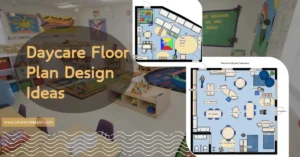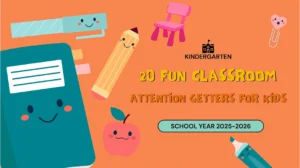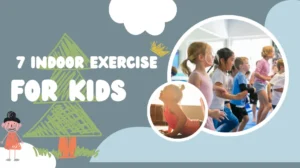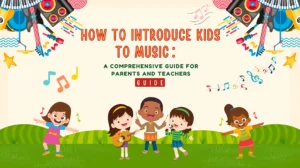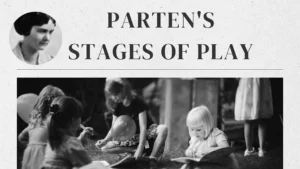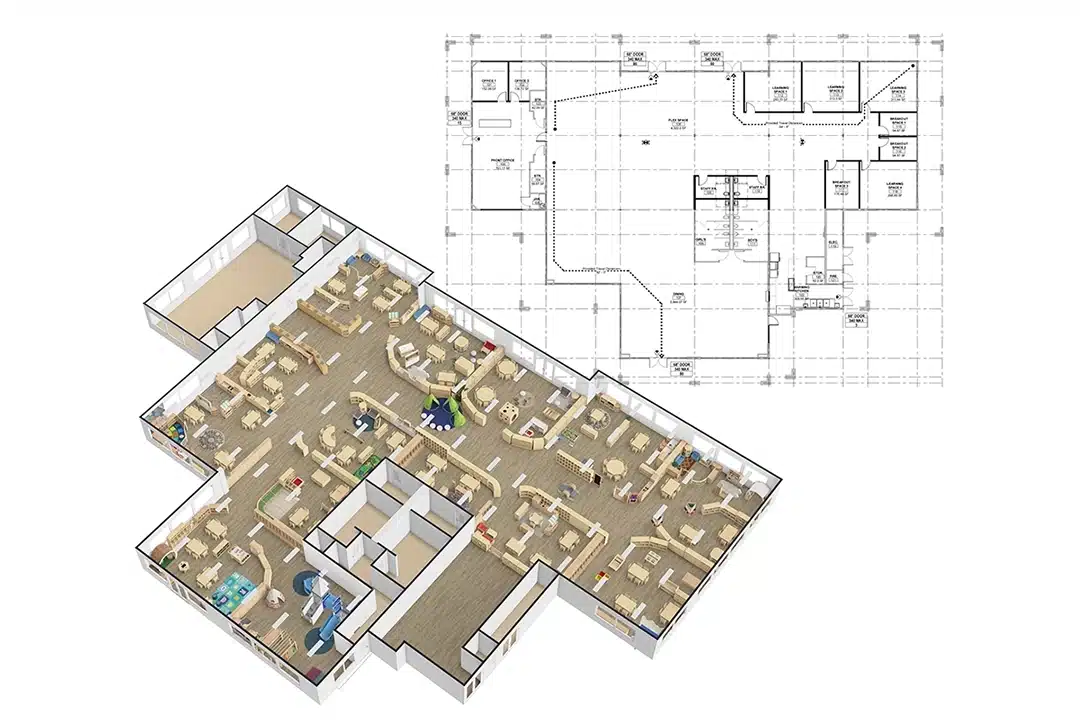Are your students just blinking in the classroom when outdoor activities are impossible? Do rainy days, freezing temperatures, or heatwaves cancel your outdoor plans? Are you struggling to keep kids focused, moving, and happy inside the classroom or at home? It’s a daily challenge—and you’re not alone. That’s why having a variety of reliable Indoor Recess Games is more important than ever.
Indoor Recess Games give kids exactly what they need when outdoor space disappears—room to move, connect, and reset. These simple activities ease restlessness, boost attention, and bring joy into the day. With the right games, even a small room becomes a space for laughter, learning, and lighthearted energy. For any teacher, parent, or caregiver, Indoor Recess Games are a lifeline on the days that don’t go as planned.
This guide includes 45 engaging Indoor Recess Games tailored to different age groups, energy levels, and classroom settings. Whether teaching early learners or planning a rainy-day recess at home, these activities are designed to boost teamwork, spark creativity, and maintain classroom harmony.

Why Indoor Recess Games Matter?
When outdoor play isn’t possible, Indoor Recess Games become essential—not optional. These activities provide structure, movement, and focus when students are confined indoors. Whether in preschool, kindergarten, or elementary settings, they help children reset physically and mentally without stepping outside.
Physical Activity Keeps Kids Regulated
Children need frequent movement to stay balanced. Indoor Recess Games support gross motor development by encouraging running in place, crawling, jumping, or stretching in limited space. They help maintain healthy energy levels and reduce hyperactivity, especially in younger age groups. When daily schedules limit outdoor time, structured indoor play prevents restlessness and supports motor control.
Emotional and Social Benefits of Indoor Play
Beyond movement, Indoor Recess Games offer emotional release and peer interaction. Games like partner challenges, follow-the-leader, or mirror movements allow kids to express feelings through play. These shared activities reduce anxiety, build trust, and improve cooperation. For kindergartners and preschoolers, consistent social interaction through indoor games lays the foundation for emotional regulation and positive group behavior.
Supporting Focus and Classroom Flow
After an active session of Indoor Recess Games, students return to their seats more focused and calm. Simple activities like freeze dance or desk-side stretches stimulate attention and reset the brain. For teachers, this means fewer disruptions and smoother classroom transitions. For kids, indoor play helps improve task persistence and learning readiness—even when they haven’t left the room.

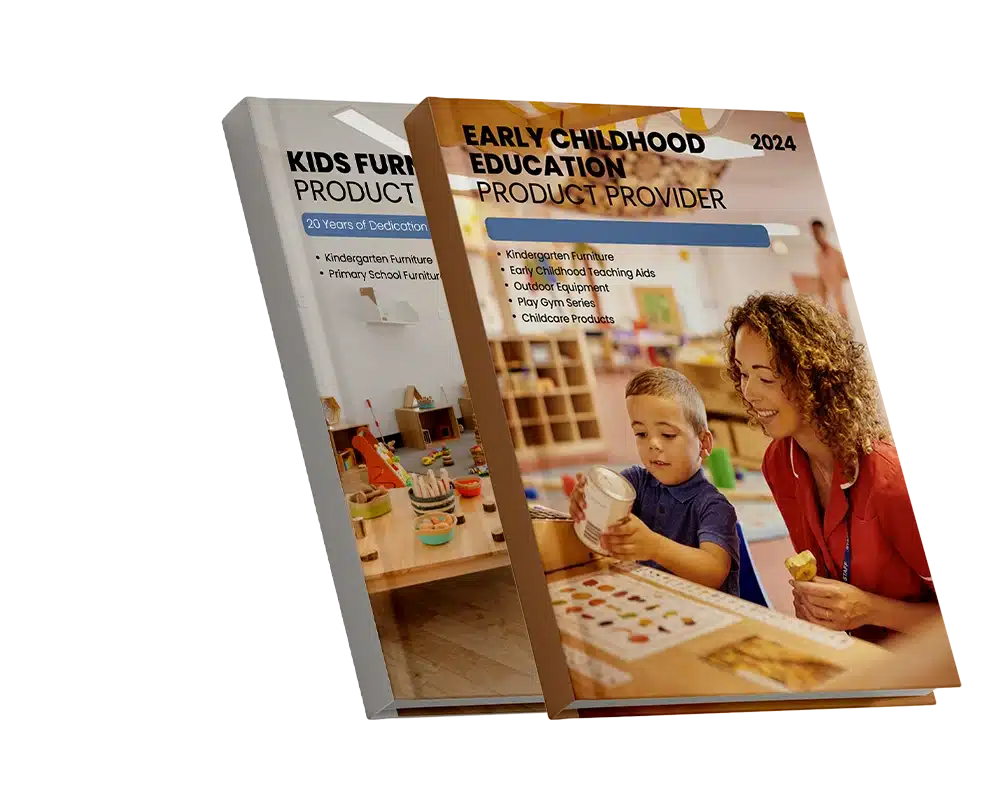
Classic Indoor Recess Games That Never Get Old
Some Indoor Recess Games never go out of style. They’re simple, require little or no equipment, and work across different age groups. Most importantly, these games have stood the test of time because they still deliver substantial developmental benefits—coordination, focus, turn-taking, and self-control—all within a familiar format.
Below are 10 classic Indoor Recess Games, each presented with a professional structure: Interview, Goal, Set Up, and How to Play.
1. Simon Says
Interview
Simon Says is one of the most reliable classic Indoor Recess Games. It’s loved for its simplicity and flexibility, making it perfect for transitions or quick movement breaks.

Goal
Improves listening, concentration, and impulse control.
Set Up
- No equipment needed
- Open floor space
How to Play
- One player (or teacher) acts as “Simon”
- Give commands starting with “Simon says…” (e.g., “Simon says touch your nose”)
- If the command is given without “Simon says”, students must ignore it
- Those who act when they shouldn’t are out or do a quick, silly action
2. Freeze Dance

Interview
A favorite among young learners, Freeze Dance is one of the most energetic Indoor Recess Games and works well even in small classrooms.
Goal
Boosts motor control, Rhythm, and attention span.
Set Up
- Music player or speaker
- Open movement space
How to Play
- Play upbeat music and let kids dance freely
- Pause the music randomly; students must freeze immediately
- Anyone who moves after the music stops does a funny action or sits out
- Resume the game with new songs or faster tempos
3. Heads Up, Seven Up

Interview
This classroom classic is great for quiet play, especially on rainy days. It’s one of the best-known Indoor Recess Games for elementary-age students.
Goal
Promotes observation, deduction, and self-regulation.
Set Up
- No equipment needed
- Desks or seating area for students
How to Play
- Select seven students to stand at the front
- Remaining students put their heads down and thumbs up
- Each of the seven taps one player’s thumb, then returns to the front
- Tapped players guess who tapped them
- Correct guessers switch places with the tapper
4. Four Corners

Interview
Four Corners is a movement-based game that’s quiet yet exciting. It’s among the most commonly used Indoor Recess Games for managing larger classrooms.
Goal
Enhances decision-making, spatial awareness, and group play.
Set Up
- Label four corners of the room (1–4 or with colors)
- Blindfold or instruct one player to close their eyes
How to Play
- Players silently walk to one corner
- The “caller” counts to 5 and then calls out a corner number
- Players in the called corner are out
- The game continues until one player remains
5. Red Light, Green Light

Interview
This timeless movement game encourages fast thinking and self-regulation. It’s one of the most adaptable Indoor Recess Games for kindergartners.
Goal
Develops auditory processing, motor control, and reaction time.
Set Up
- Open space
- Line on the floor for “start” and “finish”
How to Play
- One player (the “traffic light”) stands at the finish line
- Others line up at the start
- When “Green light!” is called, students move forward
- When “Red light!” is called, they must stop immediately
- Anyone who moves on red goes back to the start
6. Hot Potato

Interview
Hot Potato adds excitement and urgency to any indoor setting. It’s simple and fun—ideal for group Indoor Recess Games that require minimal prep.
Goal
Improves hand-eye coordination, timing, and social play.
Set Up
- Softball or beanbag
- Music player
How to Play
- Players sit or stand in a circle
- Pass the “potato” quickly as music plays
- When music stops, the person holding the object is “out” or does a challenge
- Continue until one player remains
7. Duck Duck Goose

Interview
This game mixes movement with anticipation. It’s a classic Indoor Recess Game that still excites young children.
Goal
Supports turn-taking, speed, and group attention.
Set Up
- Enough floor space for a seated circle
- No additional equipment needed
How to Play
- One player walks around the circle, tapping heads: “Duck… duck… goose!”
- On “goose,” the tapped child chases the tapper
- If caught, the tapper sits in the center
- If escaped, the “goose” becomes the new runner
8. Musical Chairs

Interview
Musical Chairs combines music, movement, and friendly competition. It remains one of the most recognized Indoor Recess Games globally.
Goal
Enhances spatial awareness, anticipation, and reaction.
Set Up
- Chairs (1 fewer than the number of players)
- Music player
How to Play
- Arrange chairs in a circle, facing outward
- Play music as students walk around the chairs
- Stop music randomly—everyone must find a seat
- The player without a seat is out
- Remove one chair each round
9. Shadow Mimic

Interview
A quieter game focused on precision and mimicry. It’s excellent for calming down after a high-energy recess session.
Goal
Promotes attention, control, and motor imitation.
Set Up
- No equipment needed
- Clear floor space
How to Play
- One player is the leader
- Others must mimic their exact movements in silence
- Slow, controlled gestures work best
- Rotate leaders after 1–2 minutes
10. Follow the Leader (Classic Version)

Interview
This version emphasizes slow movements and structured imitation. It’s simple and effective for all age groups.
Goal
Builds gross motor imitation and group cohesion.
Set Up
- No equipment needed
- Assign one child or teacher as the leader
How to Play
- The leader moves around the room performing actions
- Group follows in line, repeating every move
- Actions can include tiptoeing, hopping, and crawling
- Rotate the leader after each round
Active Indoor Recess Games for Kindergarten
Young children need frequent physical movement, especially when stuck indoors. These active Indoor Recess Games are designed for kindergarten-aged kids to release energy safely while building gross motor skills, focus, and classroom discipline. Each game uses limited space and minimal materials—perfect for small classrooms or home settings.
1. Animal Walk Races

Interview
Animal Walk Races are a classic Indoor Recess Game that combines imaginative play with physical development. Kids love pretending to be animals, and it keeps them moving purposefully.
Goal
Builds core strength, balance, coordination, and imaginative thinking.
Set Up
- Clear an open path or “race lane”
- Optional: tape start and finish lines on the floor
- No equipment required
How to Play
- Choose 3–5 animal movements (e.g., bear crawl, crab walk, frog jump, duck walk, snake slither)
- Call out one animal at a time and have all kids “race” across the lane
- Optional: Use a timer or play music during movement
- Rotate animals every round
2. Traffic Light

Interview
Traffic Light is one of the most effective Indoor Recess Games for managing energy and practicing self-control through movement.
Goal
Improves reaction time, body awareness, and listening skills.
Set Up
- No materials needed
- Open classroom space
- Assign one adult or student as the “traffic controller.”
How to Play
- Kids stand in a group
- Leader calls out commands: “Green light!” = walk or run in place
- “Yellow light!” = slow-motion movement
- “Red light!” = freeze
- Kids must respond quickly to each color
- Anyone who moves on “red” sits out or does a funny task (e.g., animal noise)
3. Balloon Volleyball

Interview
This is a fun twist on volleyball that’s perfect for confined spaces. It’s a great Indoor Recess Game that encourages movement and gentle competition.
Goal
Enhances coordination, teamwork, and spatial awareness.
Set Up
- 1–2 balloons
- Optional: Tape a “net” line across the room (string, chairs, or floor tape)
- Divide students into two groups
How to Play
- Teams stand on opposite sides of the “net”
- Hit the balloon back and forth
- Players may only use hands or arms
- Count how many times the balloon is hit before touching the ground
- Rotate positions to include all kids
4. Rainbow Run

Interview
Rainbow Run is a colorful and visual activity. It is a teacher-friendly Indoor Recess Game that gets kids moving in a pattern while they learn color identification.
Goal
Reinforces color recognition, direction-following, and cardiovascular movement.
Set Up
- Colored paper or floor dots (at least five different colors)
- Scatter them randomly across the room
- Optional: music player
How to Play
- Call out a color or play music with color instructions
- Kids must run or hop to that color spot
- Change color every 10–20 seconds
- Add challenges: “Touch red with your elbow!” or “Hop to green!”
5. Chair Obstacle Course

Interview
Turning classroom chairs into an obstacle course is an effective way to build a mini gym. It’s one of the best Indoor Recess Games for energetic kindergartners.
Goal
Boosts agility, gross motor skills, and directional awareness.
Set Up
- Use 6–8 classroom chairs
- Arrange in zig-zags, tunnels, or rows
- Optional: cones, hoops, or floor tape
How to Play
- Kids crawl under, climb over, or weave through chairs
- Give commands: “Under the red chair, around the blue one!”
- Time each student, or do it as a relay
- Supervise closely to ensure safety
6. The Floor Is Lava

Interview
This imaginative Indoor Recess Game gets kids thinking on their feet—literally. It’s always a crowd favorite and builds quick reflexes.
Goal
Encourages strategic thinking, movement control, and creativity.
Set Up
- Cushions, mats, or construction paper “islands”
- Space them out on the floor
- Define a “safe zone” area
How to Play
- Kids must only step on safe spots to cross the room
- Leader shouts “Lava!” and everyone freezes
- Anyone touching the floor “lava” must return to the start
- Vary the layout each round to increase difficulty
7. Crab Soccer

Interview
Crab Soccer brings both laughter and muscle work into your classroom. It’s a high-energy Indoor Recess Game that transforms traditional soccer into something new.
Goal
Strengthens core, coordination, and motor planning.
Set Up
- Softball (foam or inflatable)
- Mark small goal areas with tape or cones
- Ensure open space and padding if needed
How to Play
- Kids get into crab walk position (hands and feet on floor, belly up)
- Try to kick the ball toward the goal
- Teams score points just like regular soccer
- Rotate players after each round
8. Jump the River

Interview
This game adds excitement to a simple jumping activity. It’s one of the easiest indoor recess games to adapt to different skill levels.
Goal
Develops leg strength, spatial estimation, and coordination.
Set Up
- Use two ropes, jump bands, or strips of tape as “riverbanks”
- Increase the space between them over time
How to Play
- Kids line up and jump over the “river”
- Make the river wider after each round
- If someone lands in the “river,” they cheer others on
- Optional: Use a timer for speed rounds
9. Follow the Leader (Action Version)

Interview
This classic game becomes a physical challenge when the leader adds jumps, spins, and stretches. It’s a top-tier Indoor Recess Game for structured mimic play.
Goal
Enhances imitation, balance, and executive functioning.
Set Up
- No materials needed
- Assign a leader (teacher or student)
- Set boundaries for movement space
How to Play
- The leader performs a series of movements
- Group mimics exactly in real-time
- Rotate leaders every few minutes
- Add levels: slow motion, backward walking, etc.
10. Dice Fitness

Interview
Dice Fitness adds an element of randomness and excitement, making it feel like a game of chance. It’s a flexible Indoor Recess Game ideal for daily use.
Goal
Supports counting, memory, and whole-body fitness.
Set Up
- 1 large foam die (or printable paper cube)
- Pre-assign 6 movement types (e.g., 1 = 5 jumping jacks, 2 = 10 toe touches…)
- Optional: poster board with key
How to Play
- Roll the die
- Kids perform the action matching the number
- Repeat for 5–10 rounds
- Add variations: double rolls, team relays, or “mystery moves”
Educational and Quiet Indoor Recess Games for Kindergarten
Not all Indoor Recess Games need to be loud or high-energy. Some of the most valuable play happens when kids are quietly engaged—learning through movement, imagination, and focused interaction. These games promote cognitive development, language skills, and emotional regulation while keeping the classroom calm and productive.
Below are eight quiet and educational Indoor Recess Games, each structured for clarity and utility.
1. Alphabet Yoga

Interview
Alphabet Yoga blends literacy with movement, making it a go-to choice for calm yet educational Indoor Recess Games in early learning classrooms.
Goal
Supports letter recognition, phonemic awareness, and body control.
Set Up
- Alphabet flashcards or letter signs
- Open floor space
How to Play
- Pick a letter card and demonstrate a yoga pose whose name begins with that letter (e.g., “B is for Butterfly”)
- Kids follow the pose and say the letter sound aloud
- Rotate through 5–10 letters
- End with a “quiet pose” to reset
2. Story Builders

Interview
This group storytelling game activates language and listening skills while keeping energy low. It is a perfect fit for calm Indoor Recess Games during transition times.
Goal
Enhances vocabulary, narrative skills, and listening comprehension.
Set Up
- No materials required
- Circle seating arrangement
How to Play
- One child starts a story with one sentence
- Each child adds one sentence at a time
- Continue around the circle until a complete story forms
- Optional: assign themes (animals, friendship, space, etc.)
3. Mystery Box

Interview
Mystery Box sparks curiosity and descriptive language. It’s one of the most effective quiet Indoor Recess Games for sensory and verbal development.
Goal
Promotes tactile exploration, prediction, and expressive language.
Set Up
- Small box with a hand opening
- Fill with safe classroom items (toy car, sponge, pinecone, etc.)
How to Play
- One child reaches in, feels the object without looking
- Describes what they think (texture, shape, temperature)
- Others guess what the object might be
- Reveal and rotate
4. Shape Hunt

Interview
A focused activity that blends movement with early math. Ideal for indoor play that remains purposeful and quiet.
Goal
Teaches shape recognition, classification, and spatial vocabulary.
Set Up
- Cut-out shapes or shape cards
- Hide them around the classroom
How to Play
- Give students a “shape checklist”
- Let them search for and collect shapes quietly
- Optional: have students group or count the shapes afterward
- Can be done individually or in teams
5. Guess the Sound

Interview
It’s a great auditory game that hones listening and attention skills. It’s especially useful in Indoor Recess Games, where calm energy is preferred.
Goal
Improves auditory discrimination and memory.
Set Up
- Device to play sound clips
- Use sound effects: animals, instruments, weather, etc.
How to Play
- Play one sound at a time
- Ask students to guess what made the sound
- Provide visual cues if needed
- Optional: let students make their sounds for classmates to guess
6. Build a Word

Interview
This literacy-based game keeps the classroom quiet while reinforcing phonics and spelling.
Goal
Supports early reading, spelling, and phonemic awareness.
Set Up
- Letter tiles, magnetic letters, or flashcards
- Word list or category themes
How to Play
- Give students a starting letter or blend
- Ask them to build a word using the letter cards
- Optional: time-based challenge or partner mode
- Have students read the word aloud
7. Silent Ball

Interview
Silent Ball combines movement and control without adding noise—perfect for classrooms needing quiet focus during indoor play.
Goal
Strengthens hand-eye coordination, focus, and self-discipline.
Set Up
- Soft foam ball
- An open area where students can sit or stand in a circle
How to Play
- Toss the Ball to one another silently
- If someone talks, misses a catch, or throws poorly, they’re out
- Last player remaining wins
- Restart for multiple rounds
8. Puzzle Relay (Calm Version)

Interview
Puzzle Relay offers teamwork and critical thinking in a quiet format. It’s a more mindful option among competitive Indoor Recess Games.
Goal
Enhances problem-solving, sequencing, and visual-spatial skills.
Set Up
- 2–3 floor puzzles or table puzzles
- Divide students into small teams
How to Play
- One child from each team adds a piece to the puzzle at a time
- Tag the next teammate quietly
- Continue until puzzles are complete
- Emphasize teamwork over speed
Group Games that Encourage Teamwork and Cooperation
In every kindergarten or early education setting, Indoor Recess Games should go beyond energy release and build team spirit, communication, and trust. These group games help children work together, listen to one another, and solve challenges as a unit. Perfect for large groups, these activities promote shared success and social-emotional learning.
Here are 9 Indoor Recess Games that focus specifically on teamwork and cooperation.
1. Human Knot

Interview
A classic team challenge that strengthens communication and physical cooperation. It’s among the most trusted groups for Indoor Recess Games in social skill development.
Goal
Builds teamwork, patience, and spatial awareness.
Set Up
- No materials needed
- Groups of 6–10 students
How to Play
- Players stand in a circle and grab hands with two different people across from them
- Without letting go, the group must untangle into a full circle
- Encourage discussion and strategy
- Can time each group or race multiple teams
2. Parachute Switch
Interview
Parachute games are perfect for group cooperation and can be adapted indoors. This version promotes both motor coordination and turn-taking.
Goal
Encourages listening, group rhythm, and collaboration.
Set Up
- Classroom parachute or large bedsheet
- Open space
How to Play
- Children hold the parachute edges
- Call out commands like “Switch if you have red shoes!”
- Those who are called run under the parachute and switch places
- Add ball toss or color waves for variation
3. Build the Tallest Tower

Interview
This engineering-based game fosters group planning, patience, and collective creativity. It’s ideal for small teams as an indoor recess game.
Goal
Supports teamwork, problem-solving, and fine motor skills.
Set Up
- Materials: cups, paper rolls, blocks, or straws
- One set of materials per team
How to Play
- Divide kids into teams of 3–5
- Set a timer for 5–10 minutes
- Goal: build the tallest free-standing tower using only the given materials
- Team with the tallest stable structure wins
4. Team Scavenger Hunt

Interview
This cooperative twist on a traditional scavenger hunt encourages group problem-solving and observation.
Goal
Develops collaboration, memory, and attention to detail.
Set Up
- List of classroom-safe items or visual clues
- Small bags or baskets for teams
How to Play
- Divide students into teams
- Provide each team with a list
- Teams search the room together and collect or identify all items
- The first team to complete the list wins
5. Blanket Flip
Interview
A physical team puzzle where success depends entirely on coordination and communication. It’s a favorite among indoor group games.
Goal
Fosters teamwork, strategic thinking, and balance.
Set Up
- One blanket or mat per group
- Open area
How to Play
- Team stands on a blanket
- Without stepping off, the group must flip the blanket over
- They must use only their feet and coordination
- Time limit optional
6. Relay Drawing
Interview
This creative Indoor Recess Game transforms drawing into a collaborative challenge. Great for building communication without talking.
Goal
Supports team sequencing, visual thinking, and creativity.
Set Up
- Whiteboards or large paper
- Markers for each team
How to Play
- Divide into teams
- First student draws a basic shape or line
- Next student adds a part—without speaking
- Continue until the whole picture is formed
- Judge results for creativity, humor, or accuracy
7. Line Up By…

Interview
This game combines movement, listening, and nonverbal cooperation—perfect for larger classes that need quiet team activity.
Goal
Enhances logical thinking, cooperation, and sequencing.
Set Up
- No materials needed
How to Play
- Give instruction: “Line up by birthday month” or “Line up by height”
- Students must figure it out without talking
- Great for team-building and leadership awareness
- Add a timer to increase the challenge
8. Puzzle Assembly Race

Interview
An effective, hands-on game where teamwork determines speed and success. Ideal for teaching shared responsibility.
Goal
Improves team communication, planning, and fine motor skills.
Set Up
- Small puzzles (25–50 pieces)
- One per team
How to Play
- Teams race to complete their puzzle
- Only one team member can place a piece at a time
- Rotate turns in a circle
- Encourage verbal support among teammates
9. Pass the Object Challenge
Interview
This game trains coordination and requires every team member to stay alert. It’s a quiet but highly cooperative Indoor Recess Game.
Goal
Promotes focus, cooperation, and Rhythm.
Set Up
- Small classroom-safe item (beanbag, soft toy, etc.)
- Music player (optional)
How to Play
- Students sit or stand in a circle
- Pass the object around quickly without dropping it
- Add music or movement (over-under, behind-back, etc.)
- Introduce time limits or passing patterns for the challenge
Indoor Music, Songs and Dance Activities
Some of the most joyful and effective Indoor Recess Games involve music, Rhythm, and movement. These activities help children release energy and develop listening skills, coordination, and memory. They’re perfect for rainy days, short breaks between lessons, or as part of your daily classroom rhythm.
Here are eight original and engaging music-based Indoor Recess Games designed for movement, creativity, and classroom harmony.
1. Move and Match

Interview
Move and Match combines movement with social matching, allowing students to interact while following music cues. It’s ideal for small spaces and high engagement.
Goal
Builds social awareness, movement control, and auditory processing.
Set Up
- Music player
- Open space
- Pre-written matching prompts
How to Play
- Play music while students move around (walk, skip, tiptoe)
- Pause music and call out a prompt (e.g., “Find someone wearing the same color”)
- Students must quickly pair up based on the prompt
- Repeat with different prompts and movements each round
2. Echo Claps and Steps

Interview
This rhythmic game builds auditory memory and focus while incorporating movement. It’s a structured but low-energy option among Indoor Recess Games.
Goal
Supports rhythm recognition, listening skills, and memory.
Set Up
- No materials needed
- Clear teacher demonstration area
How to Play
- The teacher performs a short rhythm (claps, stomps, snaps)
- Students echo the pattern exactly
- Add steps or gestures for full-body imitation
- Increase complexity over time
- Allow student leaders to create rhythms
3. Musical Corners

Interview
This variation of Four Corners introduces music and category-based thinking, making it a dynamic and educational group game.
Goal
Enhances cognitive flexibility, movement, and listening.
Set Up
- Label each corner with a category (colors, animals, numbers, etc.)
- Music player
How to Play
- Play music as students move freely
- Pause the music—students run to any corner
- Call out a category or question (e.g., “A color that’s in the rainbow!”)
- Only students in the correct corner stay in
- Repeat with new prompts and categories
4. Beat the Rhythm

Interview
Beat the Rhythm brings instruments or body percussion into play, helping students connect sound with physical movement.
Goal
Develops beat synchronization and gross motor timing.
Set Up
- Rhythm sticks, hand drums, or use body percussion
- Optional: music with a steady beat
How to Play
- A teacher or student creates a rhythm
- Everyone keeps the beat with hands, feet, or instruments
- Add movements like stomping, marching, or clapping on specific beats
- Rotate leaders for variety
5. Gesture Songs

Interview
Gesture Songs are interactive sing-alongs that reinforce vocabulary and movement through simple, repeatable motions.
Goal
Builds expressive language, coordination, and group participation.
Set Up
- Song lyrics with gestures (e.g., “Baby Shark,” “Wheels on the Bus”)
- No extra materials needed
How to Play
- Sing and perform the motions as a group
- Add dramatic expression or speed changes for fun
- Allow students to invent new verses or gestures
- Perform in pairs or small groups to promote interaction
6. Sound-to-Motion Challenge
Interview
In this game, students match different types of sounds to specific movements. It’s a sensory-rich experience perfect for indoor learning.
Goal
Improves sound identification and gross motor planning.
Set Up
- Audio clips or musical instruments with distinct sounds
- Movement chart (e.g., clap = jump, bell = spin)
How to Play
- Play a sound clip
- Students perform the matching motion
- Mix sounds randomly for a challenge
- Let students create their sound-motion pairs
7. Classroom Drumline

Interview
Classroom Drumline uses Rhythm as a form of community building and emotional regulation. It is great for older kindergarteners and early primary school children.
Goal
Promotes rhythm memory, collaboration, and expression.
Set Up
- Buckets, tabletops, rhythm sticks, or hand drums
- Teacher or student leader with a strong beat
How to Play
- The leader creates a simple drum rhythm
- Others echo it back or play along
- Build layers by assigning parts (bass beat, claps, taps)
- Optional: perform as a “band” in front of peers
8. Sound Statue Stories

Interview
This unique game mixes imagination, music, and storytelling. It encourages creativity while remaining calm and organized—ideal for a quiet indoor play session.
Goal
Strengthens creative expression, body awareness, and narrative thinking.
Set Up
- Music player with various soundscapes (jungle, ocean, city)
- Open space
How to Play
- Play a soundscape or musical track
- Kids move freely, acting like characters inspired by the sound
- When the music stops, they freeze in a “story statue”
- The teacher selects 1–2 students to explain their statue’s story
- Resume music and repeat
Safety Considerations for Indoor Games
Here are essential safety tips tailored for indoor games for kids.
Choose the Right Game for the Right Space
Large movement activities like active games for kids or indoor field day games should only be used in wide, clear spaces. In small classrooms, stick to safer games to play inside the house, such as silent ball, mirror freeze, or childhood indoor games like “I Spy.” Avoid running or high-contact play when furniture, shelves, or wires are present.
For tight areas, use games for 3–5 year olds inside or preschool games inside that allow movement in place—marching, animal walking, yoga poses, or seated action songs.
Remove Hazards Before Play
Before starting any indoor recess activities, physically sweep the space. Remove cords, clear clutter, push back chairs, and tape down rugs. If you’re running games for activities with movement—like room recess games or games to play indoors with friends—ensure no sharp objects are nearby.
For indoor games for toddlers or younger students, double-check for choking hazards and small items on the floor.
Use Safe Equipment Only
Use indoor games for kids’ equipment specifically designed for safety: soft foam balls, beanbags, rhythm sticks, or cones. Avoid hard plastic or metal. Mark “indoor only” items to prevent confusion during indoor entertainment games, especially if materials are shared with outdoor play.
Reduce risks in classroom games by choosing lightweight, non-toxic, and washable items—this is especially important for indoor games for preschoolers and classroom games for primary students.
Establish Rules and Emergency Cues
Before playing any games, kindergarteners play, set clear, age-appropriate rules:
- No pushing or grabbing
- Respect each other’s space
- Freeze on cue (use visual signals for non-verbal classroom games)
- Walk, don’t run indoors
For games to play with after-schoolers or mixed-age groups, use color-coded cards or verbal countdowns to manage start and stop transitions. This ensures that even large group kid games indoors stay controlled.


Tips for Successful Indoor Play
Adapt Games to Fit Small or Crowded Spaces
Not every school or home has access to a gym or multipurpose room, but with the proper planning, even a small classroom can become a high-energy space.
- Choose indoor games for kids that limit running, like Simon Says, Guess the Sound, or gesture-based classroom games.
- Break up a large class into small group games for kids, rotating between activities in stations.
- Focus on games to play inside the house using minimal materials, like clapping games or fun games that require just a chair or a floor spot.
- Use tape or mats to mark zones for games inside the classroom so kids know their movement limits.
If you’re planning indoor recess games for kindergarten, start with structure: every movement should have a start and stop signal. This keeps the room safe and the kids focused.
Adapt Games to Fit Group Size
Whether playing with three kids at home or managing large group indoor games with 25 students, scaling is key.
- For small groups, choose fun games with three players, such as Hot/Cold Item Search or Alphabet Story Building.
- For large groups, use indoor group games for kids that allow everyone to participate at once, such as Freeze Statue or Parachute Switch.
- Split a large class into rotating “mini teams” and run quick recess room games in 5-minute circuits. This keeps movement manageable and engagement high.
- Don’t forget to prepare games for 6–12 year olds with scaled difficulty for mixed-age settings.
Whether it’s games for kindergarteners indoors or games to play with afterschoolers, structure always beats chaos. The more clearly roles and rules are defined, the smoother the game.
Plan for Transitions
Smooth transitions make or break classroom flow. Before and after your indoor children’s games, use calming cues.
- Cue with music or countdowns: “In 10 seconds, we’ll wrap up!”
- Use breathing exercises or preschool games at home, like Animal Yoga, to settle students post-activity.
- Keep indoor recess ideas on a visible chart to help children anticipate what comes next.
This makes games inside house routines feel safe and predictable—especially helpful during rainy day games for kids or classroom recess on tight timelines.
Use Visual Supports for Non-Readers
Many children aren’t reading yet for kindergarten indoor games and activities. Use picture-based game cards or icon boards to show:
- What game do they play
- What tools do they use
- Where they’ll play
- What the “finish” looks like
This works exceptionally well with preschool classroom games, games for 3–5 year olds inside, and indoor activities for elementary students.
Keep a Backup List of Low-Energy Games
Sometimes the energy isn’t there—or the space isn’t safe. Always have a go-to set of low-energy, no-equipment indoor games ready:
- Games to play with preschoolers inside, like “I Spy” or “Copy Me”
- Indoor games for kids, no equipment, such as Mirror Freeze, Thumb War, or Body Shape Challenge
- Great for indoor field day games when kids need downtime between stations
These are especially effective for inside recess ideas or rainy-day classroom games, where the activity must stay structured but soft.
Make It Fun… but Functional
Every game for indoor play should meet at least one developmental goal:
- Support physical regulation
- Reinforce cognitive skills
- Build social connections
- Help with transitions and focus
That’s how you turn play into learning—through movement with intention.
Frequently Asked Questions About Indoor Recess Games
Q1: What makes a good Indoor Recess Game?
A good Indoor Recess Game is safe, simple to organize, and developmentally appropriate. It should require minimal setup, fit the indoor space, and encourage movement, cooperation, or creativity. Ideally, it works well for different group sizes and energy levels.
Q2: Can Indoor Recess Games be educational?
Absolutely. Many Indoor Recess Games, like alphabet yoga, rhythm echo, or puzzle relays, support cognitive and language development. When designed thoughtfully, they reinforce math, reading, memory, and problem-solving skills through active play.
Q3: What equipment do I need for Indoor Recess Games?
Most Indoor Recess Games require little to no equipment. Standard tools include soft balls, cones, beanbags, music players, and printable cards. Effective games like “Simon Says” or “Silent Ball” use no materials.
Q4: How do I manage classroom behavior during Indoor Recess Games?
Start with clear rules and structure. Review expectations before each session, use visual or sound cues to manage transitions, and offer games that match your group’s energy level. Well-structured Indoor Recess Games often improve behavior rather than cause chaos.
Q5: Are Indoor Recess Games suitable for large groups
Many Indoor Recess Games can be adapted for large classrooms or school-wide activities. Use stations, small-group rotations, or whole-class games like Freeze Statues, Four Corners, or Rhythm Repeat. The key is clear boundaries and consistent supervision.
Q6: Can I use Indoor Recess Games at home?
Many Indoor Recess Games work perfectly in home settings, especially when space is limited. Parents can use them during rainy weekends, snow days, or indoor birthday parties to keep kids creative and socially engaged.
Conclusion
Indoor Recess Games are more than just fillers for bad weather—they are essential tools for keeping children active, socially engaged, and mentally focused, especially when outdoor time isn’t possible. Whether managing a preschool classroom, running after-school programs, or planning home-based activities, having a reliable set of indoor games ensures every child continues to thrive physically and emotionally.
From movement-based classics to quiet educational challenges, these carefully selected indoor games for kids support holistic development across age groups and group sizes. As classrooms become more dynamic and learning environments more flexible, the need for well-designed, adaptable indoor play activities continues to grow.
And of course, a thoughtfully designed indoor play space is just as important as the games themselves. Whether it’s a reading corner that doubles as a music zone or open floor space optimized for movement, the right environment makes all the difference. That’s why at Xiha Montessori, we focus on creating safe, functional, and child-centered environments—furnishing kindergartens worldwide with the materials they need to make every game, lesson, and interaction truly count.



